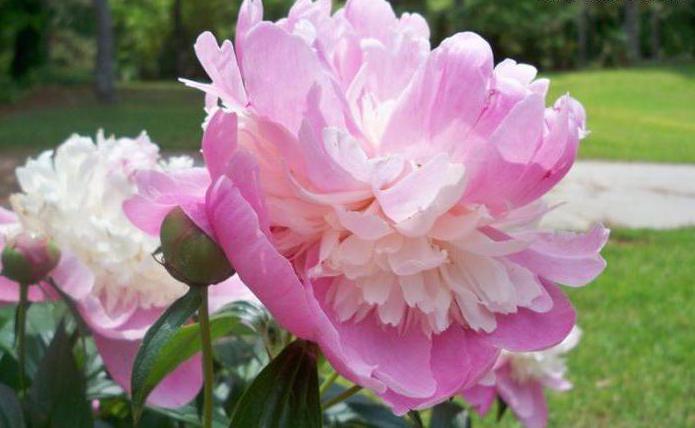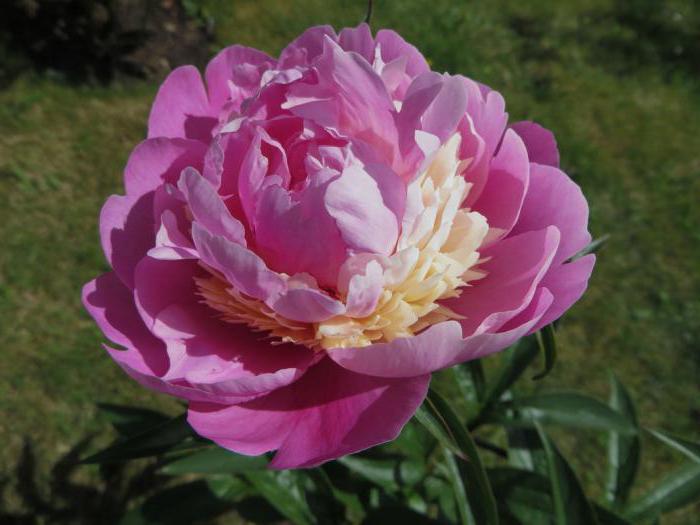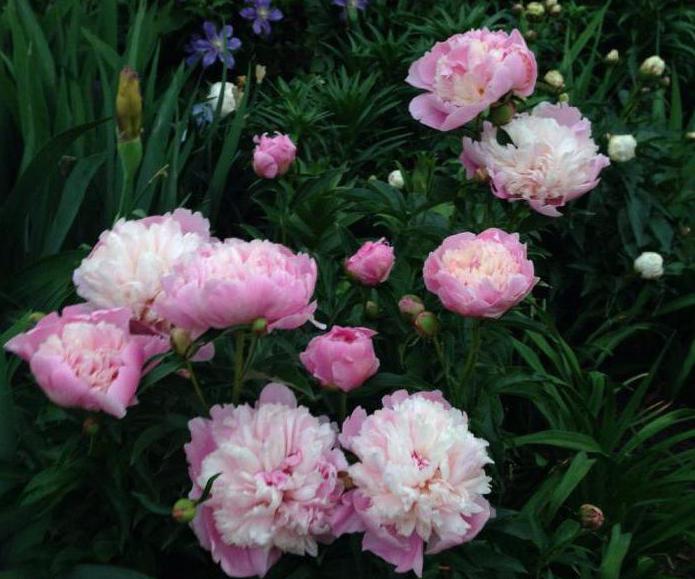Pork fajitas are a spicy Mexican appetizer recipe that consists of a meat stew with vegetables, chili and fresh salad. Traditionally, all the ingredients are wrapped in a round unleavened dough flatbread made from wheat or corn flour - a tortilla. In Mexico, fajita is served separately - meat, vegetables and tortillas, and you assemble your own version of the dish. Assemble the fajitas just before serving to prevent the tortilla from getting soggy.
Winter is the most crucial period for apple trees and you need to survive it with minimal losses. In general, a set of measures includes collecting a late harvest, collecting and destroying fallen leaves, digging up the trunk strip, fertilizing, moisture-recharging irrigation, mulching the trunk area, removing lichens and moss from the trunks, stripping the bark, removing dry and interfering branches, whitewashing, and pests and diseases, sealing hollows and insulating young apple trees.
One of the most favorite crops used to create bonsai is Japanese serissa. This delightful plant is also called the tree of a thousand stars (its flowering fully justifies this nickname). But serissa has other advantages. Beautiful bark, miniature leaves, amazing silhouettes - all this more than compensates for its capriciousness. Growing serissa is not an easy task. But still, among indoor bonsai, it is considered one of the most unpretentious.
Mushroom soup with chanterelles - what could be tastier and simpler. In my opinion, only champignons and oyster mushrooms compete with chanterelles in terms of their availability and ubiquity. Even in the most “non-mushroom” year, there will be a bucket of yellow “fox babies” on the market. In addition to accessibility, there are a number of other advantages. Firstly, worms almost never infect this fungus. Secondly, you can collect a lot at once. Thirdly, there is no need to clean. In general, no matter where you look - one continuous benefit!
Strange, dazzlingly bright, outlandish, sloppy - what kind of epithets do garden lychnises receive? These perennials combine winter hardiness and unpretentiousness with an outlandish appearance. Culture has become one of the favorite species and is found both in fashionable design projects and in private gardens. The main advantage of Lychnis is its low maintenance requirements. After all, to admire the colors of the inflorescences, you just need to remember about timely feeding.
In this article we will talk about moisture-recharging watering of fruit crops, which, I think, many gardeners neglect, especially in rainy autumn. It seems to many that the rain that thundered on the roof all night can wet the soil to a sufficient depth, and you can do without the use of additional artificial irrigation without spending extra money on water. But no, you can’t, and now we’ll tell you why and teach you how to properly recharge watering.
Zucchini marinated for the winter with onions, peppers and physalis - a light, spicy, assorted vegetable appetizer. Zucchini is a neutral vegetable; it perfectly absorbs different tastes and smells. A small handful of onions and sweet peppers, a little fragrant spices - that's all you need to prepare delicious canned vegetables. This year, physalis grew in my garden. They make jam from it, but in pickled form, in my opinion, physalis is much tastier.
Soil is more than just a habitat for plants. Along with carbon dioxide, light and water, it is a vital element without which most plants cannot survive. The characteristics of the soil, its mechanical composition, acidity, water and air permeability, nutritional value play a key role. Errors in substrate selection are a source of great problems and risks. The most reliable option for indoor plants are purchased, ready-made substrates.
Korean salad with cucumbers for the winter - a fiery cold appetizer in a sweet and sour marinade. This recipe is not for sissies, as it contains quite a lot of hot pepper (this is the highlight of the preparation). Spicy vegetables will come in handy festive table or as a side dish for a meat dish, especially shish kebab or fried chicken. For the recipe for Korean salad with cucumbers and tomatoes, choose high-quality vegetables - small pimply cucumbers.
Few people know, but gooseberries are a literally eternal and very productive crop. From a well-developed gooseberry bush, which you have looked after properly, you can collect up to one and a half dozen kilograms of both tasty and large berries at the same time. So, let's first briefly list the activities that we need to carry out during the autumn period with gooseberry bushes, and then describe each of them in detail so that you have an idea of what and how to do.
Primroses are plants that perfectly fit the concept of a “lazy” garden. They are unpretentious, undemanding to care, and can settle even in places where, it would seem, primroses have no place at all. Equally beautiful leaves and blooms are a nice bonus for plants that can be “planted and forgotten.” True, it is not possible to say that they grow on their own about all primroses. But there are many species that allow you to create beautiful flowering accents, simplifying garden care.
Meatballs with tomato and sweet pepper sauce are a classic dish that many people fell in love with as children. Whatever the pork cutlets are called: meat balls, minced meat hedgehogs, meatballs or meatballs, as in this recipe, the essence does not change. A juicy cutlet in a fragrant thick sauce looks so appetizing that everyone’s mouth waters without exception. You can add cream or sour cream to the meatball sauce and thicken it with flour, but it is better to add more vegetables.
There have been, are and will be disputes over digging up the trunk circle of fruit trees for a very long time, probably as long as the orchards exist. There are quite a few options for maintaining the trunk circle of a fruit tree, including black fallow (namely digging), sodding, and mulching, and each of these measures has both pros and cons. Digging the soil near the tree trunk and mulching can be combined, including watering and fertilizing.
It is no coincidence that palm trees have gained leadership among indoor giants. Beautiful, formal and elegant at the same time, they bring clean lines and a tropical feel to homes for decades to come. And although the belonging of plants to palm trees is determined at first glance, the palm family is far from homogeneous. And first of all - due to its demandingness and capriciousness. Among indoor palm trees there are both unpretentious ones and species that only a select few can grow.
Tomatoes in their own juice for the winter with bell peppers - delicious tomatoes for the winter. These preparations do not belong to the category of “put everything in a jar, fill it with marinade”, no - you will have to tinker. But, as they say, the devil is not as terrible as he is painted. Firstly, the skin of ripe tomatoes can be easily removed. Secondly, the blender turns tomatoes into puree in a matter of seconds. Thirdly, it is better to spend 15 minutes sterilizing products than the same 15 minutes going to the store.
Selection called Sorbet is one of the most popular ornamental crops by Russian gardeners. It is impossible to imagine a garden without this exquisite, luxurious beauty, capable of decorating any, even the most austere, landscape and organically fitting into a park. Peony Sorbet with its elegant, laconic beauty is popular among eminent designers and novice flower growers. It successfully competes with new, no less dazzling varieties. We will pay attention to the description of this plant and the agricultural technology for growing it in this article.
Peony Sorbet: description
A compact bush with a medium flowering period, growing up to 0.9 m in height, captivates with double buds of the most delicate pink-cream shades, blooming in mid-June. An unpretentious perennial with a powerful rhizome and strong, durable peduncles that support large flowers reaching 16-18 cm in diameter. The flower of such a culture as the Sorbet peony is unusual: it has three layers, it is made up of alternating rows of concave petals of various shapes. Luxurious flowering is accompanied by a fresh, bright aroma - a unique business card varieties. 
Not only is the flowering bush decorative; the dense, figuratively dissected leaves on strong stems retain their magnificent shape after flowering, gradually changing from lush summer green to autumn crimson.
Preferences and agricultural techniques for growing crops
The enviable endurance of peonies is known; they have high frost resistance, easily withstanding sudden changes in temperature and snowless winters, grow excellently on soils of any structure and can bloom without receiving adequate nutrition. All these qualities fully characterize the Sorbet peony, but fertile soils provide more generous and spectacular flowering. 
This crop is light-loving, and, planted in well-fertilized loams with a neutral reaction in an area open to the sun, it will surprise with its first flowering in the third year. Most often, Sorbet peony is propagated by dividing the rhizome. The best time for this is August or September. A standard division should have a piece of rhizome and several shoots, on which there are 3-4 growth buds. Plant the cuttings in standard size planting holes, compact the soil (without trampling!), and water well.
Pre-winter worries
Before winter, a young peony is mulched with humus, sawdust or covered with special materials, spruce branches, and roofing felt. With the arrival early spring the insulation is removed because the crop begins to grow as soon as the sun begins to warm up. Adult crops do not need additional shelters. For the winter, all peony stems are cut off, leaving five-centimeter stumps above the ground.
Peony care
The unpretentiousness and truly unique endurance of the culture are surprising, because even the complete absence of caring measures will not stop their bright flowering. But certain care significantly increases the decorative effect, so periodic watering, loosening and weeding of the soil under the bush are necessary. The plant is not fed for the first two years, since it has enough nutrition in the soil received during planting. From the third year, the peony should receive food twice a season: in spring and in autumn.  Spring fertilizing with high-quality organic matter will push the plant to grow. And after flowering, phosphorus-potassium fertilizers are applied, which are necessary to strengthen the tissues of the crop. In addition, regular watering, weeding and loosening the soil under the bush are very welcome for such a crop as the Sorbet peony. Reviews from flower growers who cultivate this variety in their own gardens are unanimous. All of them emphasize the dazzling beauty of the plant even with minimal care.
Spring fertilizing with high-quality organic matter will push the plant to grow. And after flowering, phosphorus-potassium fertilizers are applied, which are necessary to strengthen the tissues of the crop. In addition, regular watering, weeding and loosening the soil under the bush are very welcome for such a crop as the Sorbet peony. Reviews from flower growers who cultivate this variety in their own gardens are unanimous. All of them emphasize the dazzling beauty of the plant even with minimal care.
Luc Klinkhamer, 1987, Netherlands.
Terry peony Sorbet is a wonderful duet of soft pink and cream shades! The inflorescences of this peony are very unusual. They are three-layered, with soft pink and creamy white alternating layers of petals. This wonderful flower has a surprisingly delicate aroma. Medium height bush. Blooms in July. Height: 80 cm. Winter hardiness zone: 3 (-40 ° C).
Peonies are well-deservedly popular among gardeners. In terms of the beauty of their flowers and decorative foliage, they rightfully occupy one of the first places among garden perennials. Large, pastel or brightly colored flowers are good both on the bush and as a cut flower; their aroma is surprisingly pleasant. The openwork lush foliage persists until late autumn, when it turns from dark green to crimson. Peony bushes without flowers are attractive in the garden against the backdrop of a lawn and in a flower bed. These plants are long-lasting. They grow in one place for decades without transplantation. Excellent decorative qualities, relative unpretentiousness and simple agricultural technology contributed to the popularity herbaceous peonies in many countries. Now about 5 thousand varieties are registered in the world, which originate mainly from two species - P. officinalis and P. lactiflora. There are over 500 cultivars in our country. They differ in color, size and shape of flowers, flowering time, height and appearance of the bush. Even a completely inexperienced gardener, if he adheres to simple rules of agricultural technology, will definitely achieve success.
Location of herbaceous peony. The location for planting the peony should be open and sunny, although some shade during the midday hours is acceptable. Peonies grow in deep shade, but do not bloom. To avoid the development of diseases, air circulation is necessary, so it is better to plant plants at least some distance from buildings, trees and shrubs. For all peonies, areas with close groundwater are unsuitable; under such conditions, the roots of peonies rot.
Soil for herbaceous peony. Cultivated loamy, slightly acidic soils (pH 6-6.5) are most suitable for peonies. On clay soils add sand, on sandy soils - 1.5 buckets of clay. On acidic soils, add 200-400 g of lime.
Planting herbaceous peony. Peonies can be compressed and replanted in spring or autumn. In order for them to grow well and bloom in one place for many years, it is important to choose it correctly right away. It is prepared in advance, about a month in advance. Considering that over time the bushes will grow greatly, they are placed no closer than 1 m from each other. A hole is dug measuring 60x60x60 cm. It is filled 2/3 with a mixture of humus or compost, peat, sand and garden soil in equal parts (approximately one bucket of each component is taken for this volume). Add 250 g of double superphosphate or 500 g of bone meal, 1 tablespoon of iron sulfate, 1 teaspoon of potash and a liter jar of wood ash to the mixture. The remaining space is filled with garden soil. By the time of planting, the soil in the hole will be compacted and will not sag in the future. If for some reason it was not possible to prepare the hole in advance, then compact the soil as it is filled and then water it. In the first year after planting and replanting, plants, as a rule, do not bloom, look weakened, and the number of stems does not exceed 1-2. In most cases, it’s not a big deal if the plants don’t bloom or don’t bloom fully in the second year. They just haven't reached maturity yet. It is much more important that in the second year the plants look healthy and have significantly increased in development compared to the first year: the number of stems should increase to 3 - 6.
Caring for herbaceous peony. Peony care includes fertilizing, watering and mulching. It is better to feed young plants by foliar feeding. Starting from the second week of May, once a month, the leaves are watered from a watering can with a sieve with a solution of complete mineral fertilizer, for example, “Ideal”, the concentration recommended in the instructions. To better wet the surface of the leaves, add a little soap (1 tablespoon per 10 liters of solution). Foliar feeding is carried out in the evening or in cloudy weather. Adult plants also need foliar feeding at the beginning of the growing season. It is carried out three times at three-week intervals, starting from the 2nd week of May. The first time the peonies are fed with a urea solution (50 g per 10 liters of water), the second time microfertilizers are added to the urea solution (1 tablet per 10 liters of solution). The third time, water only with a solution of microfertilizers (2 tablets per 10 liters of water). At the beginning of growth, peonies absorb predominantly nitrogen (N); during budding and flowering - nitrogen, phosphorus (P) and potassium (K); when laying flower buds for next year - only phosphorus and potassium. Taking this into account, fertilizers are added to the soil 3 times per season. At the end of March and beginning of April, while there is still snow, fertilizers containing nitrogen and potassium are scattered. They enter the soil with melt water and are absorbed by plants. Under an adult bush, 10-15 g of the active substance is added. The second time the peonies are fed during the budding period: in late May-early June, full mineral (NPK - 10:20:10) or organic fertilizer (mullein - 1:10, bird droppings - 1:25) is applied to the bush. The third feeding is carried out 2 weeks after flowering - 15 g of active substances P and K each. Mineral fertilizers during the second and third feedings are evenly scattered in a ring groove around the bush, moistened abundantly and leveled with soil. Peonies are not watered often, but use 2-3 buckets for each adult bush. Water should wet the soil to the depth of the roots. For convenience, you can dig 50 cm long drainage pipes near the bushes and pour water into them. Sufficient moisture is especially necessary in early spring, during budding and flowering, and in August, when flower buds are formed. After watering, the soil must be loosened, which helps retain moisture in the soil and improve aeration, and also inhibits the growth of weeds. They deprive peonies of nutrients, interfere with air circulation, and contribute to the spread and development of diseases. The lifespan of hybrid peonies in one place, originating from the officinalis peony, is limited to 7-10 years. Then they should be divided and planted in a new place. Varieties of milky peony and wild-growing species remain healthy and profusely flowering much longer, 25 - 30 years, and some even 100 years, with good care. In the fall, before frost, peony stems are cut off at soil level and burned. The remains of the stems are sprinkled with ash - 2-3 handfuls per bush. Shelter for adult plants is not required.
Reproduction of herbaceous peony. Only wild species of peonies are propagated by seeds. All peonies can be propagated vegetatively - by cuttings, layering and dividing the bush. The most promising way to propagate is by dividing the bush. Plants grown from seeds bloom in the fourth or fifth year. It is best to plant freshly harvested seeds in the ground, then they can germinate next year in the spring. They are sown in August in loose, moist soil. Stale seeds germinate only in the second or third year. The highest reproduction rate was observed when using root cuttings, when the planting unit becomes a small piece of rhizome with a dormant bud. It is separated from the bush in July, and by September it takes root. But such cuttings develop slowly and bloom in the 5th year. Peonies can be divided from 3 to 4 years of age, provided that they have already bloomed normally, the number of stems has exceeded 7, and the stems do not grow in a bunch from one point, but occupy a certain area with a diameter of at least 7 cm. The last condition is evidence that the rhizome quite developed and can be divided into several parts. In the middle zone, the optimal time for this is from mid-August to the third ten days of September. The stems of the dug up bush are cut off at a height of 10 cm. The roots are washed with water and left in the shade for several hours so that they lose their fragility and do not break when dividing. The standard planting unit is a division with 2-3 renewal buds and a part of the rhizome measuring 10-15 cm. Larger divisions take root less well, and smaller ones need additional care. Immediately before planting, the division is disinfected for half an hour in a dark pink solution of potassium permanganate or in an infusion of garlic, and then immersed in a solution of heteroauxin for 8-12 hours (1 tablet per 10 liters of water). When it dries, the cuts are rubbed with crushed coal. It is also useful to dip the delenki in a clay mash with the addition of copper sulfate (1 tablespoon per bucket of water). The prepared division is planted in a hole on a sand cushion. Cover the top with garden soil so that its layer above the buds is no more than 5 cm, and water it abundantly. In the first year, for the winter, plantings need to be mulched with peat with a layer of 5-7 cm. In the spring, the mulch is not removed until reddish sprouts appear on the surface (they are very fragile and break off easily). When the shoots grow a little, the mulch is raked to the side and the soil is loosened. During the first 2 years, peonies build up their root system, so you need to be patient and not let them bloom. In the first year, be sure to pinch off all the buds; in the second, you can leave only one. When it bursts, it is cut as short as possible and placed in water to examine the flower. However, the first flowering may not be typical for a given variety. Flowers of peonies corresponding to the variety appear only in the third year and even later.
Using peonies in design. To decorate the site, you need to select varieties with a beautiful bush shape and bright flowers, and different flowering periods. Peonies create beneficial volume in mixed flower arrangement and serve as an excellent backdrop for other plants when they finish blooming. But peonies look most advantageous in solitaire or group plantings on a green lawn, in a large space. It is good when groups of peonies are separated by plants with contrasting foliage textures. For cutting, it is recommended to choose profusely flowering peonies with a beautiful flower shape. In such varieties, during the budding period, only one central bud is left on the stem, and the side buds are removed when they reach the size of a pea. No more than half of the stems, no longer than 40 cm, are cut from the bush (the remaining part of the stem should have 2-3 leaves). If the bush loses most of its leaves, it weakens, the renewal buds become smaller, and flowering deteriorates the next year.



